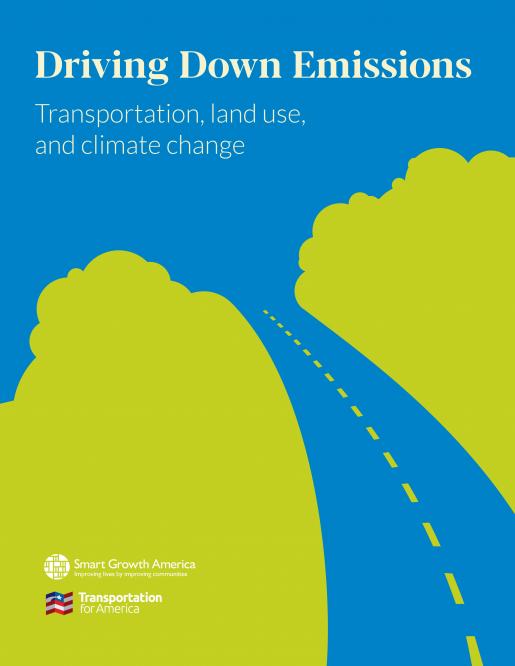
Authors
Publication Date
October 2020
Categories
Resource Type
Learn more on October 28th
Join us for a webinar about Driving Down Emissions on October 28th. Learn more and register here.
Driving Down Emissions
Driving Down Emissions explores how our land-use and transportation decisions are inextricably connected, and unpacks five strategies that can make a significant dent in the growth of emissions while building a more just and equitable society:
- Getting onerous government regulations out of the way of providing more homes where people naturally drive less;
- Making safety the top priority for street design to encourage more short trips, walking, and biking;
- Instituting GHG reduction and less driving as goals of the transportation system;
- Investing heavily in other options for getting around, and;
- Prioritizing access to destinations.
With transportation accounting for the largest share of carbon emissions in the U.S., we’ll never achieve ambitious climate targets or create more livable and equitable communities if we don’t find ways to allow people to get around outside of a car—or provide more housing in places where that’s already an option.
Yet it seems like climate-focused policymakers have a single-minded obsession with the silver bullet solution of everyone in America buying a brand new electric car. And they do this while completely ignoring an underlying system that requires everyone to drive further every year, kills people walking in record numbers, and creates communities that cuts people off from jobs and opportunities. We need a different set of solutions to pair with one day being able to convert our current gas-powered vehicle fleet to electricity.
This report shows that reducing emissions from transportation is entirely doable—which is a good thing, because there are other areas where making significant reductions will be far more difficult. While we have no idea how to completely electrify our fleet of vehicles or how long that transition will even take, we can absolutely lower emissions in a short timeframe by meeting the demand for more housing in smart locations—helping millions of Americans who want to live in places where they can emit less and drive less find ways to do so.
The urgency of the climate crisis demands it.